Accessible visits
Experience our woodlands and reserves whatever...

From living trees supporting birds to dead wood giving a habitat to insects, woodlands provide a home for many different animals.
Listed below is just some of the wildlife to look out for on a visit to one of our woodlands.
We've also suggested a woodland where you have a chance of spotting each one.
And remember, whatever woodland you’re in, if you sit still and are quiet enough there’s all kinds of wildlife waiting to be discovered!
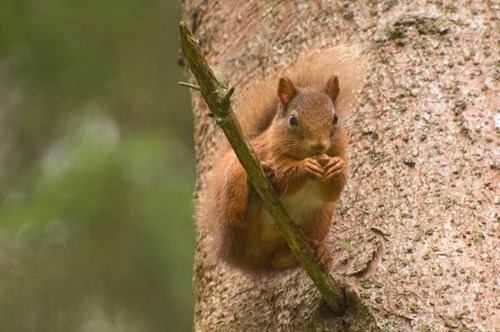
Newborough Forest, Anglesey, North Wales
The red squirrel is one of Britain’s rarest mammals.
Anglesey is a stronghold for the UK’s only native squirrel species due to the eradication of grey squirrels from the island.
Red squirrels like the mix of pines and other trees species which we grow here to provide them with food and shelter.
In the morning during spells of milder weather is a particularly good time to catch a glimpse of one.
Keep your eyes peeled for a colourful flash of red in the trees and listen out for the sound of nest boxes opening and shutting as the squirrels go in and out.
Newborough Forest and the adjacent National Nature Reserve are popular places to visit.
There are lots of waymarked walking trails, running trails and cycling trails, a huge sandy beach and the historical island of Ynys Llanddwyn.
Find out more about visiting Newborough Forest
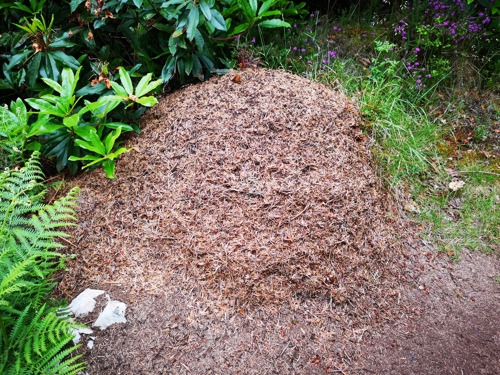
Coed y Brenin Forest Park, near Dolgellau, North Wales
The Northern Hairy Wood Ant can reach up to 12mm long and are manly found in conifer forests - this part of Wales is about as far south as you will find them.
Hundreds of thousands of them live in nests which are made from pine needles, leaves and twigs.
Some nests can reach well over 1 metre tall and some of the bigger ones in Coed y Brenin are likely to be nearly 100 years old.
Spring and summer after they have emerged from hibernation.
Coed y Brenin was Britain's first purpose-built mountain bike centre.
There are mountain bike trails for all levels from beginners to experienced riders, a skills area and bike shop.
There are also plenty of walking trails, running trails, children’s play areas and a visitor centre with café and shop.
Find out more about visiting Coed y Brenin Forest Park
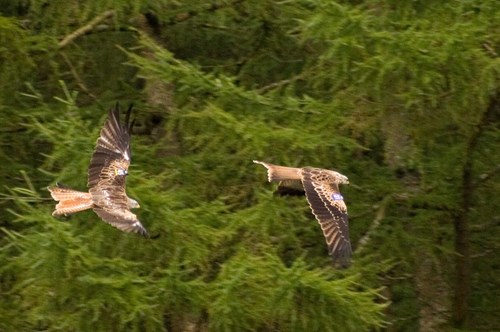
Bwlch Nant yr Arian Visitor Centre, near Aberystwyth, Mid Wales
The red kite is an unmistakable bird of prey with its reddish-brown body, angled wings and deeply forked tail.
Bwlch Nant yr Arian became a red kite feeding station in 1999 as part of a programme to protect the small number of these birds in the area then.
Red kites are fed by the lake at Bwlch Nant yr Arian every afternoon when as many as 150 come in to feed.
You can see red kites circling overhead at Bwlch Nant yr Arian throughout the day.
The red kite feeding takes place every day at 2pm in winter (GMT) and at 3pm in summer (BST).
There is a range of trails for walkers, mountain bikers, and runners which are waymarked from the visitor centre.
There is a café, shop and children’s play area.
Find out more about visiting Bwlch Nant yr Arian
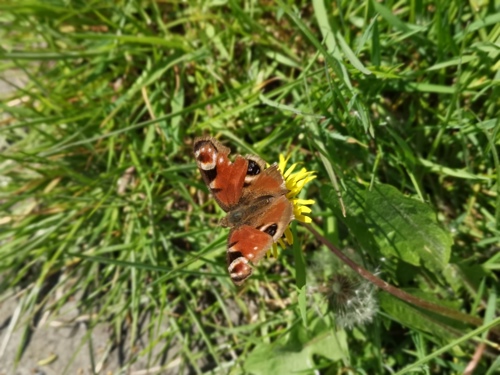
Coed y Bont community woodland, near Tregaron, Mid Wales
Situated in a quiet corner of Ceredigion, Coed y Bont woodland supports a wealth of wildlife including lots of different species of butterfly.
Start off by looking out for the distinctively patterned species that are easiest to identify.
Look out for the reddish-orange Small Tortoiseshell with its black and yellow markings on the forewing, the Red Admiral with its bold red and white stripes and the Peacock with its spectacular pattern of eyespots.
Then try to spot butterflies that have less striking markings like the orange-winged Small Copper, the dainty Common Blue and the Meadow Brown with its small black eyespot.
Once you get your eye in, you may spot some of the less common species here, too.
On a warm day.
There are two level accessible walking trails, a public footpath through the upper woodland and a picnic area.
The community association organises events in the woodland including conservation days and seasonal guided walks.
Find out more about visiting Coed y Bont
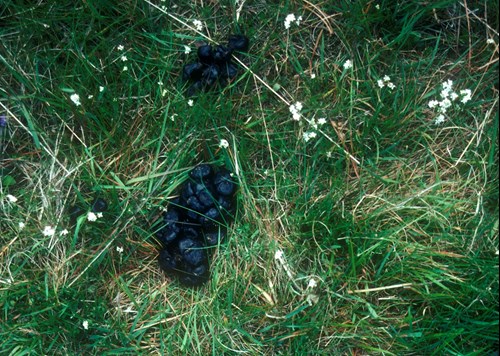
Wye Valley woodlands, near Chepstow, South Wales
Fallow deer come in a variety of colours from brown with white spots, brown/grey and black and white.
The Fallow deer is the only species in Britain with palmate antlers.
Fallow deer were the only deer species in the Wye Valley for many years.
Other species of deer such as Red, Roe and Muntjac have since moved into the area.
Dawn and dusk as most daytime hours are spent ‘lying up’, where deer lie down to ruminate between feeding bouts.
The woodlands are home to historic viewpoints offering spectacular views across the Wye gorge and river and across to the Bristol Channel.
Some of our waymarked walks through the woodlands take you to these viewpoints, including the famous Eagles Nest lookout.
Find out more about visiting Wye Valley Woodlands
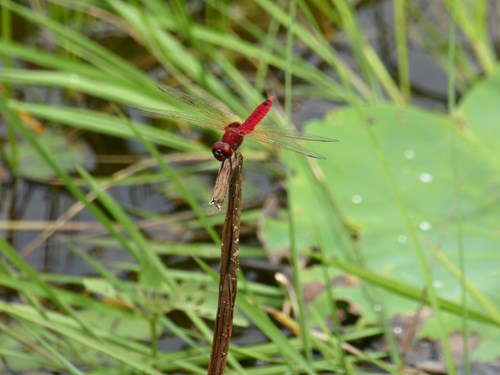
Coed y Cerrig National Nature Reserve, near Abergavenny, South Wales
There are many different species of damselfly and dragonfly in the UK.
The damselfly is smaller and slimmer than the dragonfly and rests with its wings folded.
The dragonfly is bigger than the damselfly and keeps its wings spread out.
They are seen near water as they eat other flying insects, particularly midges and mosquitoes which thrive in damper conditions.
Summer and early autumn on a warm day.
There is a short circular route which climbs up a series of rough stone steps through the oak and beech woodland which clings to the steep valley sides.
At the top of this woodland, there is a public footpath which continues upwards out of the reserve.
Find out more about visiting Coed y Cerrig National Nature Reserve